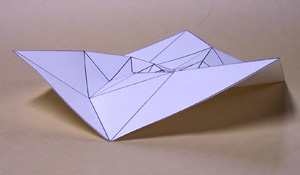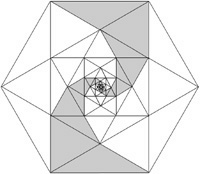
This month's topics:
Rebellion at Topology.
"There's been a rebellion, not with pitchforks but pocket calculators."
This is Gary Shapiro, writing in the October 26, 2006 New York Sun.
"The nine members of the editorial board of the Oxford University-based mathematics journal Topology have signed a letter
[available online] expressing their intention to resign on December 31.
They cited the price of the journal as well as the general pricing policies of their publisher, Elsevier, as having
'a significant and damaging effect on Topology's reputation in the mathematical research community.' "
What seems to have nettled the mathematicians Shapiro interviewed was that
journals are
charging more but doing less. Joan Birman told him: "We do the work, we check each other, we referee the articles, edit and typeset them and send them to the publisher, which slaps them between two covers and charges a huge amount." Shapiro remarks
that Grigory Perelman "published his solution to the Poincaré conjecture in an open access online archive, not in a peer-reviewed print journal," and he
quotes Sylvain Cappell: "In an age of email, people are likely to resent getting higher bills from the Pony Express." What will happen?
Peter Suber, an open-access guru, told Shapiro: "The typical scenario is the editors resign, form a new journal at a lower price, and the old journal hires new editors."
The story was picked up in the next day's Chronicle for Higher
Education: "Editorial Board of Elsevier Journal Resigns in Protest Over Pricing," by Richard Monastersky.

This spirdroball, a rhombic triacontahedron assembled from 30 spidron pairs, appeared on the cover of the October 21 Science News. Image courtesy Marc Pelletier, Walt van Ballegooijen, Dániel Erdély and Amina Buhler Allen.
The easiest way to draw spidrons is to start with a hexagon, inscribe a six-pointed star, and repeat with the star's interior hexagon ad infinitum. Then attaching to each flat isosceles triangle the equilateral triangle to its right, and to each equilateral triangle the isosceles triangle below it, you get six spiralling polygonal chains: each one is half a spidron. (Alternatively, always attach to the left; this construction makes it clear that the area of a spidron is one third of the area of the initial hexagon).


Two semi-spidrons assemble into one full spidron.
Spidrons were recently featured in Science News Online (October 21, 2006), where Ivars Peterson tells us that they were invented and named in the early 1970s by Dániel Erdély, a Hungarian industrial designer and a student of Rubik, and that Erdély soon discovered that when creased properly a spidron array takes on interesting 3-dimensional behavior, with potential practical applications.

When properly creased, the hexagonal array of six semi-spidrons (and any planar area tiled by such hexagons) becomes a 3-dimensional, dynamic object: lateral compression translates into rotation and vertical extension.
Erdély has recently been collaborating with other graphic designers and with sculptors; some of their work was presented at last summer's Bridges conference. One sample: the spidroball shown above. Additional images are available on Erdély's Spidron website."There's increasing understanding that the math situation in the United States is a complete disaster" -James Milgram, quoted in a front-page New York Times article (Tamar Lewin, November 14, 2006) with the title "As Math Scores Lag, a New Push for the Basics." This is not so much a news piece as a survey of the current situation in the "math wars," focused on the Seattle battlefront where Milgram recently made an appearance. Lewin gives space to back-to-the-basics parents' groups like Where's the Math? (Washington Parents and Educators for a Mathematically Correct Curriculum) and to the University of Washington's Virginia Warfield, identifed as a "reform math proponent." She quotes a Warfield newsletter (available online) on the tone of Milgram's address to a "Where's the Math?" meeting: "it was implicit in [his] instructions that mathematicians who do not agree are classified as mathematics educators (a rung or two below the night custodian)."
Math, Podcast from the OzarksKyle Kellams hosts
"Sunday Ozarks at Large," a weekly production
of the University of Arkansas radio station KUAF. Most Sundays he
invites U of A math professor Chaim Goodman-Strauss for a 5 to 10-minute
chat on a mathematical topic. These "Math Factor" segments are
available as
podcasts
(for the non- XML-enabled, the individual MP3 files may be accessed
here).
Typically Goodman-Strauss
anchors his topics to puzzles. Listeners submit
solutions, the solutions get discussed. "Math Factor" was featured
by Ivars Peterson in a recent (September 30, 2006)
installment of Science News Online, where he also gave a link to
MASSIVE, a database
which contains information "on more than 2,000 math and science songs."
If you've forgotten the words to Tom Lehrer's "There's a δ for every
ε," here's
where to look.
Science News Online carries almost every week a mathematical
item by Ivars Peterson under the "MathTrek" rubric. Too much material
to be surveyed in toto in this column, but highly recommended.